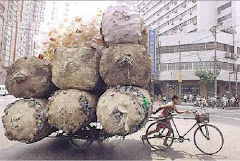A few days ago I had a chance to chat with one of the managers of a big fashion retail company in Ukraine having over 13 000 m2 of sales area.
During this chat I asked how they do the distribution to stores in Kiev and in regions. He said that Kiev stores receive 2 deliveries per a week and regional stores also get 2 deliveries per a week. I asked why merchandise to Kiev stores is not delivered every day so they could rise sales by replenishing missing items in the stores. The answer was very simple: warehouse staff is unable to make deliveries everyday. In the warehouse there were 18 warehouse staff including managers. The maximum quantity that could be delivered to stores is 10000 items per day. The working day begins at 9am and ends in 18pm. Even if the managing staff consists of 3 personnel, for 7.5 working hours 88 items are collected by one worker per hour(total 15 workers). Items are collected, scanned, packed and loaded to the trucks. No value added services like price labeling etc are done.
They receive merchandise from suppliers in lots. Every package consisted of each size of a model and the quantity between sizes were not equal. The distribution between the sizes was done according to sales rates in Ukraine for a group of merchandises per particular size. For example if M size shirts are sold more than XS size then size distribution among the shirts is distributed in a way that M size will have the biggest quantity in the lot. For example a lot consisting of 6 pieces for 4 different sizes would be like this: XS: 1 piece, S: 2 pieces, M: 2 pieces, L: 1 pieces. When particular merchandise arrives to the warehouse for the first time and it is not in the stores yet, it is delivered to the stores by a lot. But when an item is sold from this lot, warehouse does not replenish the missing item to the store. Warehouse waits until the half of the lot is sold and after a half of quantity in a lot is sold they replenish that model by a whole lot. For example if a lot consists of 6 pieces they do not replenish it until 3 items of this lot are sold. Suppose we have a lot distribution of 4 sizes consisting of 6 pieces: XS:1, S:2, M:2, L:1. Suppose the first day merchandise arrives to the store, the same day XS size was sold. The other sizes were not sold. So next day if there was delivery, the store does not get the missing size of a model. They continue to sell the remaining sizes of that particular model. Suppose after 3 days another 2 S sizes were sold. The next day stores gets a whole lot of merchandise, of course if delivery is planned to that day otherwise even store has sold the half of a lot they have to wait another couple of days because delivery of merchandise is not done everyday. So at the end we have 1 XS, 2 S, 4 M, 2 L items. On total we will have 9 items of this product insted of 6. And by every delivery this size will get bigger and bigger. And of course the merchandise layout in the store will be damaged and a look of the store will be like a typical outlet store.
The other interesting thing was the inbound process. As the company sales area was big so the inbound quantity was big but models of merchandise were few. For example per one model in the truck there were on average 800 pieces. So an inbound truck consisted on average only 50 models. Even so the stores get these merchandise the earliest after 3 working days.

